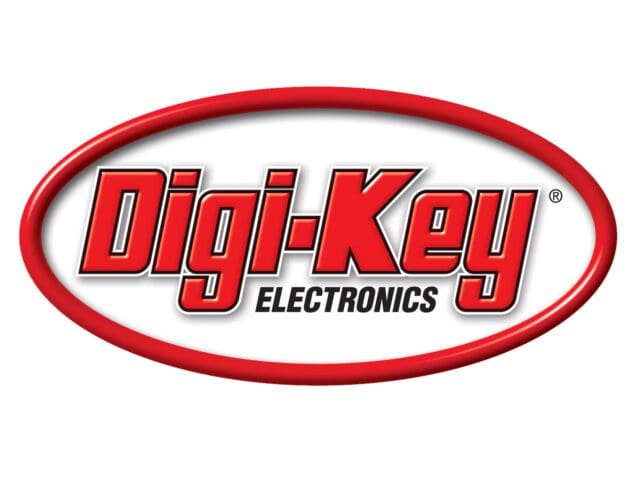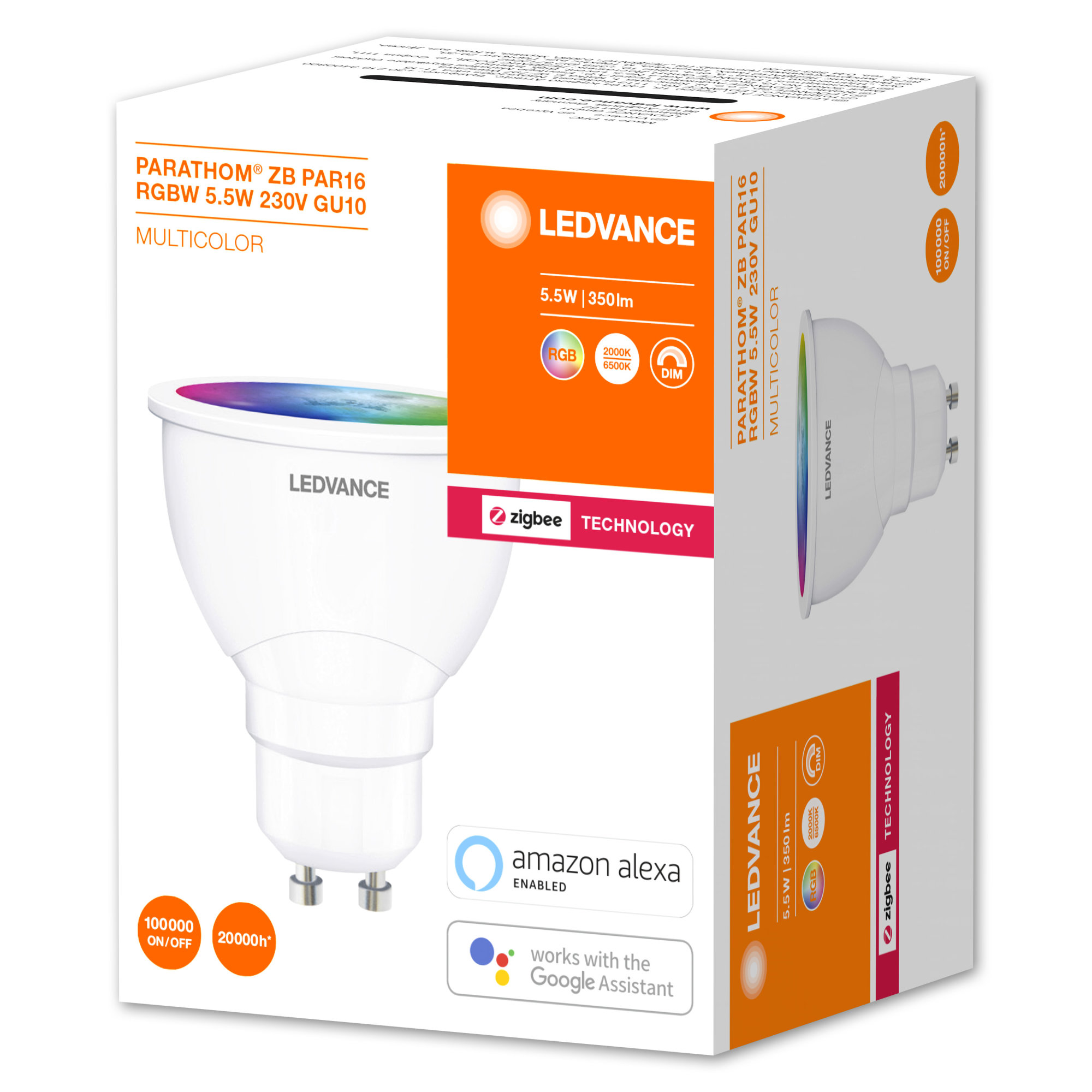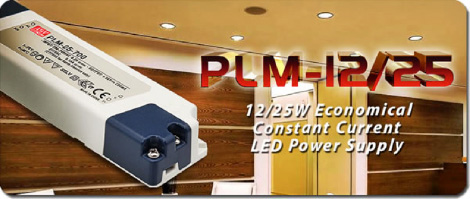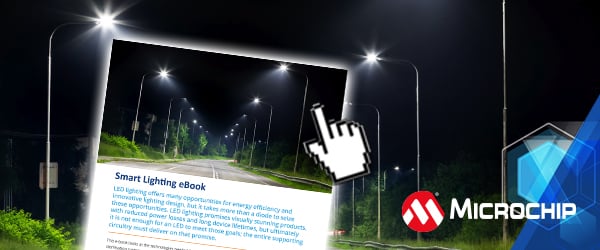Traditional sources of architectural lighting (AL), i.e. incandescent, halogen, and fluorescent bulbs, are rapidly being replaced, in both existing and new designs, by light-emitting diode (LED)-based lighting. The reasons are clear: regulatory mandates aside, LED lighting promises much higher efficiency, lower running costs, reduced heat load, much longer life (to reduce maintenance costs) and an avenue for better management. smartest of building functions.
However, the use of LEDs in a light bulb to replace those old lamps is not trivial. New drive circuits are needed to provide controlled current (not voltage), often with dimming capability. Also, while incandescent bulbs are resistive loads and can run directly from the AC power line, LEDs are different. They do not have unity power factor—that is, current and voltage are in phase—and their switching regulator drive circuitry is a potential source of electromagnetic interference (EMI). Instead, the drive circuit must provide and control the required drive current in a manner optimized for the load characteristics of the LED. The controller may also have to implement Power Factor Correction (PFC), dimming capability, and EMI suppression.
This article examines various aspects of architectural lighting and the integrated circuits that enable LED-based architectural lighting. He then presents integrated circuits from Diodes Incorporated as examples of their use in real circuits.
The objectives of the LA and the challenges of the LED
AL is the design and use of lighting systems that are embedded within the interior and exterior of a non-residential commercial structure, such as a retail store, office, or warehouse. The goal of architectural lighting design is to balance the art and science of lighting to create ambience, visual interest, and enhance the experience of a space or venue, while still meeting technical and safety requirements. It doesn't include makeshift lights that people bring in or rearrange, like their favorite desk lamp; instead, it's the lighting that "comes with the building," though often allowing for some flexibility and even rearrangement as short- and long-term needs evolve.
In recent years, AL has become a broader and more technological field, with added challenges, largely due to the need to conserve energy and manage functions and features associated with lighting. As LED-based lighting has become a dominant factor in the enhancement of AL, the techniques, circuits and components that can effectively drive LEDs in AL luminaires have become increasingly important.
Much of the impetus for the transition to LED-based AL comes from multiple regulatory mandates and standards that define various perspectives on efficiency, including dimmability, PFC, and EMI generation, among other factors. The details of these complicated and lengthy requirements differ across world regions, countries, and even states in the United States.
Important regulatory requirements in the United States include federal Energy Star standards and the California Title 24 Building Code, which is more stringent than Energy Star. Among many other considerations, Title 24 requires:
- Occupancy sensors for automatic switching on and off of lighting loads
- Dimmable LED Drivers
- Highest efficiency measured in useful lumens output per watt of input power
- Smart Connected Lighting (SCL) supporting wireless control of individual and grouped lamps via Bluetooth, Zigbee or DALI/IEC 62386, with system standby power less than 200 milliwatts (mW)
- LED output current ripple below 30% to avoid annoying and annoying flickering
- PFC of 0.9 or higher at a defined higher power
- Less than 20% Total Harmonic Distortion (THD) to minimize energy waste due to non-resistive loads
Note on dimming and blinking speed: Although the human eye is generally insensitive to flicker above 100Hz, there is an associated phenomenon, sometimes called "eflicker", which occurs when Pulse Width Modulation (PWM) is used to dim LEDs, either to control brightness or color. In PWM, the LED turns off for short periods of time (hundreds of microseconds) at a high speed. This dimming rate can interact with the scan and refresh rates of basic LED readers, display screens, security cameras, and other optical imaging devices. For this reason, the refresh rate of the LEDs must be much higher than the frequency to which the eye itself is sensitive, and this is the case with components from Diodes Incorporated.
Beyond chips, chipsets
Meeting multiple energy-related requirements is a design challenge that requires juggling conflicting approaches, as there are inevitable interactions and trade-offs between the "best" solutions for each goal. There are individual CIs optimized to address specific aspects of the problem, but a complete solution requires ensuring that these CIs work together in harmony and reinforce each other, rather than oppose each other.
For this reason, it often makes sense to examine ICs from a single vendor and the associated circuits—verified that bundle these ICs together—that the vendor has assembled. This provides designers with a proven topology and is a good starting point. For LED-based ALs, Diodes Incorporated offers suggested chipsets in two groups, one to support lower power situations (under 30W) and one for higher power installations (over 30W), with the former being those that they are usually used indoors and the latter outdoors.
The block diagram in Figure 1 shows how the three basic ICs that make up the chipset for <30 watt power applications—a dimmable LED driver, a ripple suppressor, and a dimming signal interface driver— they interact with each other, providing the necessary basic functionality.
 Figure 1: Advanced ICs—a dimmable LED driver, ripple suppressor, and dimming signal interface driver—form the core of a design for <30-watt architectural lighting. (Image source: Diodes Incorporated)
Figure 1: Advanced ICs—a dimmable LED driver, ripple suppressor, and dimming signal interface driver—form the core of a design for <30-watt architectural lighting. (Image source: Diodes Incorporated)
Looking at all three ICs separately, the AL1666S-13 High Performance Dimmable LED Driver operates with a wide input voltage range of 85 volts AC (VAC) to 305 VAC, while offering a PFC greater than 0.9 and a THD less than 10%. Supports analog regulation from 0 to 10 volts in a range of 5% to 100% and works with all standard ANSI regulators; for non-analog PWM dimming, the range is 1% to 100% at 1 kilohertz (kHz). For consistent performance, it offers better than ±2% LED line current regulation, and better than ±2% LED current load regulation from full to half load.
Next, the AL5822W6-7 is a 100/120 Hz adaptive LED current ripple suppressor in a SOT-23-6 package. It meets the difficult challenge of minimizing current ripple to meet increasingly stringent standards. In addition, since it is the device that interacts with the LEDs, it is necessary that it incorporate protection against short circuits, overcurrent and overtemperature, as well as support the operation of the hot bulb for when the circuit and the bulb are inserted into a "live" socket. ». It can provide a drastic reduction in ripple, reducing it to just a percentage of the original value, as demonstrated by some basic numbers. For example, when used with the AL1665S-13 high-performance dimmable LED driver - a close brother to the AL1666S-13 - the current ripple is about 520 milliamps (mA) peak-to-peak, but drops to just 17 milliamps. mA when combined with the AL5822 (Figure 2).
 Figure 2: Adding the AL1665S-13 high-performance dimmable LED driver to the design reduces ripple from 520 mA peak-to-peak to just 17 mA. (Image source: Diodes Incorporated)
Figure 2: Adding the AL1665S-13 high-performance dimmable LED driver to the design reduces ripple from 520 mA peak-to-peak to just 17 mA. (Image source: Diodes Incorporated)
Finally, there is the AL8116W6-7, a flexible 0 to 10 volt dimming signal interface controller. Works from a wide range of VCC from 10 to 56 volts, which can be derived from the output voltage of an auxiliary winding, power rail, or LED string voltage. Supports PWM regulation in the range of 0.2 kHz to 10 kHz using 0 to 10 volt control, and potentiometer (resistive) regulation (0 to 100 kilohms (kΩ)). Converts dimming control to the PWM output required by the system, while providing a simple cross isolation barrier dimming solution. It also offers a PWM output duty cycle of ±2.5% for a precise dimming curve, critical in multi-LED installations.
Of course, high-level block diagrams can be misleading in terms of showing the full bill of materials (BOM), including passive components, discrete active components, and other ICs. Therefore, it is important to see the actual schematic to understand what the complete circuit requires, as this affects packaging, production, and cost.
For the <30 watt chipset in Figure 1, the schematic shown in Figure 3 shows how few components are actually needed. (Transformer T1 and optocoupler are required for galvanic isolation between primary and secondary sides)
 Figure 3: The details provided by a schematic diagram of the high-level block diagram shown in Figure 1 show that only a few additional components are needed in the complete design. (Image source: Diodes Incorporated)
Figure 3: The details provided by a schematic diagram of the high-level block diagram shown in Figure 1 show that only a few additional components are needed in the complete design. (Image source: Diodes Incorporated)
Since all switching-based power circuits have real-world nuances that a schematic diagram alone can't reveal, an evaluation board is an advantage in speeding design validation and verification. The AL1666+AL8116+AL5822EV1 is an evaluation board that uses the above three ICs to provide a single stage, high PFC, dimmable 0 to 10 volt flyback LED driver (Figure 4). It provides a constant 1200 mA output current over a voltage range of 25 to 50 volts from an input voltage of 90 VAC to 305 VAC.
 Figure 4: To speed project completion, the AL1666+AL8116+AL5822EV1 evaluation board (top and bottom) facilitates a deeper understanding of the operation of the dimmable LED driver circuit using the AL1666 primary-side driver, the driver interface IC regulation of the secondary side AL8116 and the suppressor of ripple current LED AL5822. (Image source: Diodes Incorporated)
Figure 4: To speed project completion, the AL1666+AL8116+AL5822EV1 evaluation board (top and bottom) facilitates a deeper understanding of the operation of the dimmable LED driver circuit using the AL1666 primary-side driver, the driver interface IC regulation of the secondary side AL8116 and the suppressor of ripple current LED AL5822. (Image source: Diodes Incorporated)
Size is important for backwards compatibility
Why are small footprint and a short BOM important, beyond the usual "smaller is better" logic? This is partly a compatibility issue with existing lamps (bulbs) when LED driver ICs are used individually or in groups.
For example, while there are many form factors of AL lamps in common use, one that is especially widespread is the MR16 used in residential and commercial settings for directional lighting (Figure 5). Halogen light source bulbs in this format have been one of the first choices for standard AL lighting for many years.
 Figure 5: The MR16 bulb shape and size factor using halogen as a light source is widely used in AL installations. (Image source: Wikipedia; WW Grainger, Inc.)
Figure 5: The MR16 bulb shape and size factor using halogen as a light source is widely used in AL installations. (Image source: Wikipedia; WW Grainger, Inc.)
The MR16 is 2 inches in diameter at its greatest circumference. The "MR" stands for multifaceted reflector, which is what controls the direction and spread of the light it projects. This bulb is usually (but not always) powered by 12 volt AC line power, which is usually supplied via a line voltage step-down transformer.
A small MR16 halogen requires 20 watts and has a lifespan of 2,000 to 6,000 hours. By contrast, the LED equivalent requires only a few watts and has a lifespan on the order of 100,000 hours. As AL transitions to LED based light sources, it is important to be able to include the necessary circuitry in this package to provide form and fit bulbs for the huge aftermarket as well as new AL designs.
Meet higher power needs
For driving LED fixtures greater than 30 watts (equivalent to about 3 amps (A) of LED current drive), such as in outdoor applications, a two-stage topology may be preferable to a single-stage topology. , although their control and communications modules may be the same (Figure 6).
 Figure 6: Higher power LED lighting designs (30+ watts) use a two-stage topology (right) in contrast to the single-stage approach of lower power designs (left), but their “smart” interface » can be the same. (Image source: Diodes Incorporated)
Figure 6: Higher power LED lighting designs (30+ watts) use a two-stage topology (right) in contrast to the single-stage approach of lower power designs (left), but their “smart” interface » can be the same. (Image source: Diodes Incorporated)
Once again, the circuit schematic – in this case for the higher power LED lighting design solution – offers a more detailed view (Figure 7).
 Figure 7: The schematic diagram again shows the relatively high level of integration offered by this more powerful solution. (Image source: Diodes Incorporated)
Figure 7: The schematic diagram again shows the relatively high level of integration offered by this more powerful solution. (Image source: Diodes Incorporated)
Similar to the lower power design, three ICs form the core of this implementation. The first is the AL1788W6-7, a primary-side driver that supports buck and flyback topologies that do not require an optocoupler, while its quasi-resonant (QR) operation with “valley-on function” provides low switching loss. . The power factor is greater than 0.9, while the THD is less than 15%, and the standby power is less than 200 mW (for use during the day when the lights are off, for example), which contributes to the overall efficiency.
Next, the AL17050WT-7 is a non-isolated universal AC buck regulator that provides precise constant voltage (CV) control with extremely low standby power in a tiny SOT-25 package. It integrates a 500 volt MOSFET and is powered by a single winding inductor, simplifying external components and reducing BOM cost. Due to its electrical function and its position in the general topology, the device includes multiple "layers" of output, such as overtemperature protection, V undervoltage blockingCC, output short circuit protection, overload protection and open loop protection.
Finally, there is the AL8843SP-13, a 1 megahertz (MHz) buck regulator and analog LED driver with PWM dimming, capable of supplying up to 3 A output current, adjustable via an external resistor. It operates with a wide input voltage of 4.5 to 40 volts and features a current sensing accuracy of ±4% for superior channel-to-channel matching in multi-LED designs.
The AL8843SP-13 integrates the power switch and a high-side output current detection circuit; depending on the supply voltage and external components, the converter can provide up to 60 watts of output power with an efficiency of up to 97%. The important dimming function can be implemented by applying an external control signal to a single pin on the package that accepts a DC voltage or PWM signal. This thermally enhanced SO-8EP packaged device also includes protection against an open or shorted LED and an open or shorted current sense resistor, among its other modes of protection.
As with the lower power LED driving arrangement, an eval board for the higher power solution can greatly reduce the hours required to better understand a complete design situation and thus move forward. the project more effectively. For the AL8843SP-13 step-down LED driver—the most difficult component of the higher-power design—Diodes Incorporated offers the AL8843EV1 evaluation board (Figure 8).
 Figure 8: Users of the AL8843SP-13 will benefit from the AL8843EV1 basic evaluation board, which focuses entirely on the single buck regulator and 3A analog LED driver IC with PWM regulation. (Image source: Diodes Incorporated)
Figure 8: Users of the AL8843SP-13 will benefit from the AL8843EV1 basic evaluation board, which focuses entirely on the single buck regulator and 3A analog LED driver IC with PWM regulation. (Image source: Diodes Incorporated)
The AL8843EV1 evaluation board allows for basic IC exercise without interaction or interference from other active components.
Then there's "connected lighting."
Another practical and desirable enhancement to modern LED-based lighting is the ability to implement “smart connected lighting” (SCL), often simply described as “connected lighting”. Among its various attributes, it allows lamps to be controlled both in groups and individually within a group, through a connectivity standard.
What are the advantages of SCL? From a high-level system perspective – and perhaps even with some speculation and hype – a connected lighting infrastructure becomes an investment in a whole building connectivity network. The data that flows through this infrastructure enables building managers to integrate, automate, and extend the life of core building systems, lower operating costs, increase performance, and reduce downtime.
Some analysts argue that the benefits of connected lighting go far beyond just lighting. For example, Szymon Slupik, CTO and founder of Silvair, notes: "The value of the additional services that smart lighting enables is seven to XNUMX times more valuable than the lighting controls themselves and the energy savings."
SCL lamps are often in a passive "listening" state for long periods, so standby power consumption is a key parameter of concern to designers, and maximum values are specified in various regulatory mandates. Diodes Incorporated controllers and regulators are designed with standby powers less than allowable values. They also work with dimming control/communication models that support various interface standards, such as Bluetooth, Zigbee, and Wi-Fi.
One of the factors that will drive the deployment of connected lighting is the development of industry-wide standards that ensure interoperability of SCL components from different vendors. For example, the Bluetooth Special Interest Group (SIG) has worked with the lighting industry to develop a Bluetooth mesh standard optimized for creating large-scale, applicable device networks. In addition, the Bluetooth SIG and the DALI Alliance collaborated to create a standardized interface that will allow D4i certified luminaires and DALI-2 devices to be deployed in Bluetooth-based mesh lighting control networks (D4i is the DALI standard for smart luminaires ready for the IoT). Through this interface, data can flow seamlessly between sensor luminaires and lighting controls, and even to other building management systems.
Conclusion:
LED-based smart architectural lighting is improving the energy efficiency of lighting systems in commercial buildings. It is also a critical element in enabling potential long-term gains in overall building performance. Focused and optimized for LED-based AL, Diodes Incorporated's LED driver, dimmer and driver ICs are among the key building blocks required to successfully translate the potential benefits of these advanced AL possibilities into a reality. powerful, versatile and profitable.
Source of information: https://www.digikey.com.mx/es/articles/how-to-design-for-optimal-led-performance-in-architectural-lighting








